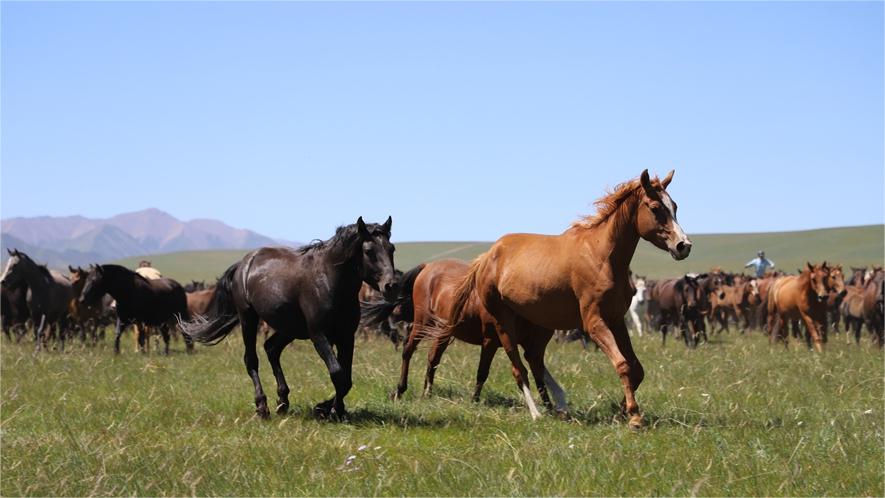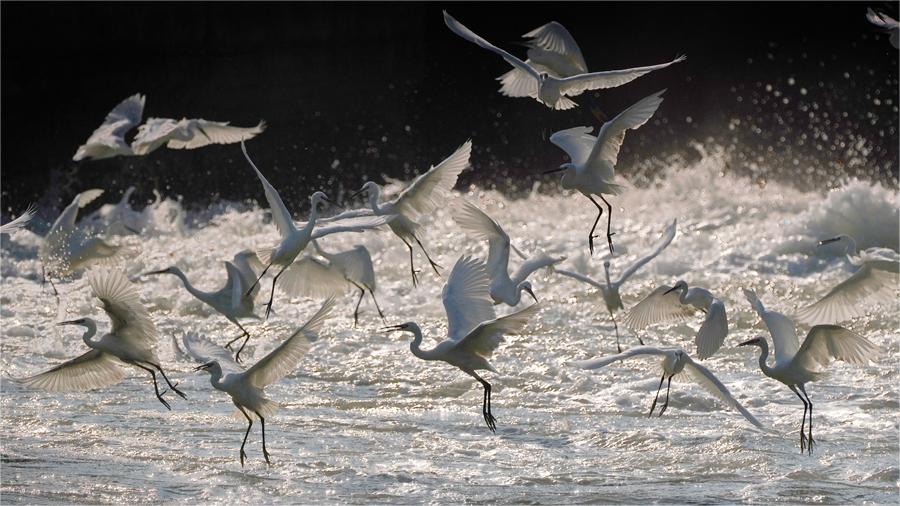Cave temple conservation highlighted at international forum
LANZHOU, Aug. 23 (Xinhua) -- Cave temple conservation has drawn global attention at a forum in northwest China's Dunhuang, with experts from China, Uzbekistan, Kyrgyzstan, Sri Lanka and Cambodia engaging in in-depth discussions on the topic.
To strengthen cooperation on cultural heritage conservation, the Dunhuang Academy signed memorandums of understanding (MOUs) with cultural institutions in countries participating in the Belt and Road Initiative (BRI) as the International Forum on Cave Temple Conservation concluded on Thursday.
Over the four-day event, hundreds of experts and scholars from 16 countries gathered in Dunhuang -- home to the Mogao Grottoes UNESCO World Heritage Site -- to exchange knowledge on cave temple conservation.
The MOUs focus on cooperation in the fields of cultural heritage preservation, academic research and cultural exchange. They include agreements on professional training and exchange programs, and will see the joint development of conservation projects, the sharing of advanced preservation techniques, and international exhibition and academic exchange cooperation.
"This is the first time Sri Lanka and China are exploring cooperation in mural preservation," said Janani Namal Seneviratne, an archaeologist from Sri Lanka.
She noted that Chinese scholars have utilized scientific instruments to analyze the composition and elements of mural pigments, providing valuable insights for Sri Lanka's conservation work.
With over 1,500 cave temples located in Sri Lanka, collaboration with Chinese experts is important to manage an overwhelming workload, Seneviratne said.
Excessive humidity is one of the main threats to the preservation of Sri Lanka's murals.
"We use sensors installed in the caves to monitor environmental factors like humidity and temperature in real time," Wu Fasi, deputy director of the Dunhuang Academy's protection and research institute, told Seneviratne.
There are over 600 sensors that track the cave environment, including sensors for temperature, humidity, carbon dioxide levels and visitor traffic, as well as sensors for external factors like rainfall, flooding and sandstorms.
"The murals at Mogao Grottoes are stunning, and China's conservation efforts have preserved them well," Seneviratne said.
China's history of cultural exchange with BRI countries has deep roots. The beaded patterns commonly seen in Dunhuang murals, for example, are also found in artifacts across various Eurasian countries, and Dunhuang manuscripts contain texts written in Western languages.
Experts from the Dunhuang Academy have conducted various research trips to Kyrgyzstan and Uzbekistan to study ancient Silk Road sites. Programs such as "From Samarkand to Dunhuang" have shed light on the interactions between civilizations over millennia.
Documentaries such as "Dialogue between the Mogao Grottoes and Angkor Wat" have helped facilitate modern exchange between ancient world heritage sites.
Chynarbek Zholdoshov, an expert from Kyrgyzstan's Ministry of Culture, Information, Sports and Youth Policy who had previously visited Dunhuang, also noted China's significant progress in cultural heritage preservation. He expressed the hope that the MOUs would lead to more cooperation in the field.
"Through collaboration with China, we can gain a broader international perspective," said Sovanlylin Meng, an architect from Cambodia. She also highlighted China's role in early conservation efforts at Angkor Wat.
Su Bomin, dean of the Dunhuang Academy, said the MOUs will facilitate further exchange, including reciprocal research team visits.
Su also emphasized the academy's commitment to advancing research on urgent global cultural heritage preservation issues, and to contributing to the protection of world heritage sites.
Photos
Related Stories
- China helps empower Afghan scholars in cultural heritage preservation
- Experts offer insights into global cave temple conservation
- China strengthens protection of cultural heritage amid flood season
- International forum discusses cultural heritage empowered by digital innovation
- Experts brainstorm role of new technology in cultural heritage protection
Copyright © 2024 People's Daily Online. All Rights Reserved.









